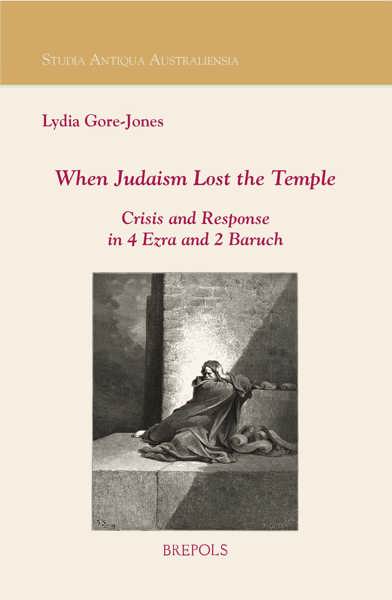
- Pages: xiv + 244 p.
- Size:156 x 234 mm
- Language(s):English
- Publication Year:2020
- € 60,00 EXCL. VAT RETAIL PRICE
- ISBN: 978-2-503-58696-0
- Paperback
- Available
- € 60,00 EXCL. VAT RETAIL PRICE
- ISBN: 978-2-503-58697-7
- E-book
- Available
Responding to the religious identity crisis brought about by the destruction of the Jerusalem Temple, 4 Ezra and 2 Baruch seek the future of Judaism by reinterpreting the Mosaic Torah and the Deuteronomic Tradition within an apocalyptic setting.
“Her work is an important corrective to the scholarship on 2 Baruch, as well as on other early Jewish texts, and it cannot simply be ignored. Lydia Gore-Jones’s volume is rich in its textual detail.” (Matthias Henze, Journal for the Study of Judaism, 53/2, 2022, p. 298-299)
“In conclusion, Gore-Jones’s study provides a helpful introduction to several shared thematic and structural concerns within 4 Ezra and 2 Baruch, while providing some consideration of the different ways that they approach these issues. (…) there are some unique thematic considerations within the present study as well, particularly the sections on reframing the torah in light of eschatological concerns in 4 Ezra and Baruch. Accordingly, this revised dissertation provides a helpful entry point into current discussions around 4 Ezra and 2 Baruch and fulfills its goal of presenting the diverse exegetical patterns present within 4 Ezra and 2 Baruch in terms of their unique approaches to reconciling torah with an imminent eschatological worldview.” (Andrew Knight-Messenger, in the Review of Biblical Literature, 3, 2024)
Lydia Gore-Jones received her PhD from Macquarie University, Sydney Australia, in 2018. She is currently Lecturer in Biblical Studies at Sydney College of Divinity. She resides in Sydney with her husband and daughter.
This book presents a study of religious thought in two Jewish apocalypses, 4 Ezra and 2 Baruch, written as a response to the destruction of the Jerusalem Temple by the Romans in 70 CE. The true nature of the crisis is the perceived loss of covenantal relationship between God and Israel, and the Jewish identity that is under threat. Discussions of various aspects of thought, including those conventionally termed theodicy, particularism and universalism, anthropology and soteriology, are subordinated under and contextualized within the larger issue of how the ancient authors propose to mend the traditional Deuteronomic covenantal theology now under crisis.
Both 4 Ezra and 2 Baruch advocate a two-pronged solution of Torah and eschatology at the centre of their scheme to restore that covenant relationship in the absence of the Temple. Both maintain the Mosaic tradition as the bulwark for Israel’s future survival and revival. Whereas 4 Ezra aims to implant its eschatology into the Sinaitic tradition and make it part of the Mosaic Law, 2 Baruch extends the Deuteronomic scheme of reward and retribution into an eschatological context, making the rewards of the end-time a solution to the cycle of sins and punishments of this age.
Considerable emphases are also placed on the significance of the portrayals of the pseudonymous protagonists, Ezra and Baruch, the use of symbolism in the two texts as scriptural exegesis, as well as their relationship with each other and links with the Hebrew Bible and other Jewish and Christian writings.




